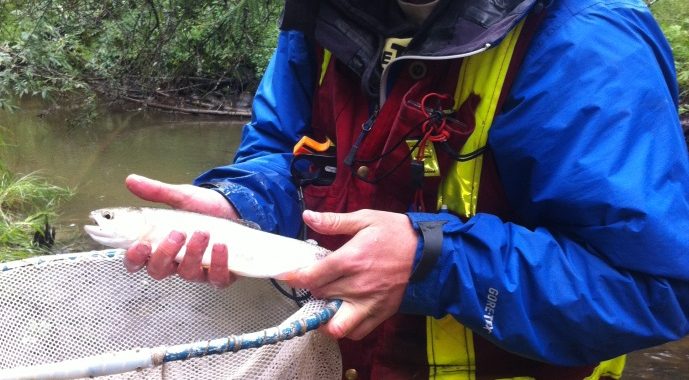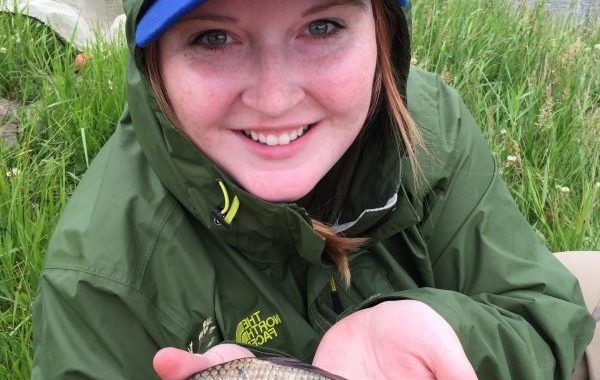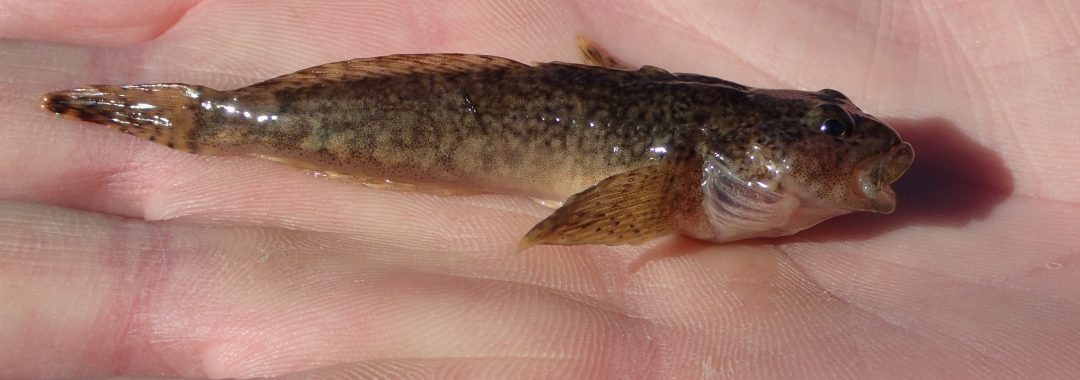Two members of the PoeschLab, Caitlyn Donadt and Michael Terry, were awarded Queen Elizabeth II graduate awards from the province of Alberta. These scholarships reward the high level of achievement of students pursuing graduate studies in Alberta. Great job team!
Category Archives: Students
Ph.D. student Sebastian Theis wins best poster at international conference
Sebastian Theis‘ research on habitat offsetting was recently awarded with Best Poster at the international conference the North American Congress for Conservation Biology (NACCB) in Toronto, ON. Great job Sebastian!
Welcome to new MSc student Taylor MacLeod
We welcome a new MSc student Taylor MacLeod. Taylor will be working on SARA species, Mountain Sucker, and impacts of hydrologic alteration as part of the Canadian Freshwater Species at Risk Research Network. Welcome Taylor!
Congratulations to Alli Banting for successfully defending her M.Sc. thesis
Allison Banting successfully defended her M.Sc. thesis today. Great job Alli!
Undergraduate student Jesse Shirton wins NSERC undergraduate award
Jesse Shirton won a prestigious NSERC Undergraduate Research Award (USRA). Great job Jesse!
Welcome to the Tracking Change Youth Knowledge Fair
Dr. Poesch is a member of Tracking Change, a program aimed at connecting local and traditional knowledge in watersheds. The Lab welcomes the youth from Alberta and Northwest Territories for the Youth Knowledge Fair! See Outreach Gallery for some photos.
Congratulations to Nate Medinski for successfully defending his M.Sc. thesis
Nathan Medinski successfully defended her M.Sc. thesis today. Great job Nate!
Undergraduate student Jamie Card wins best poster at FRUCA
Jamie Card won best Interdisciplinary poster at Festival of Undergraduate Research and Creative Activities (FRUCA) held at the University of Alberta!
Rudolfsen, T.A. (2017) Characterizing adaptive morphological features and resource selection of Rocky Mountain Sculpin (Cottus sp.), a species at risk in Canada
Thesis Title: Characterizing adaptive morphological features and resource selection of Rocky Mountain Sculpin (Cottus sp.), a species at risk in Canada
Author: Tyana Rudolfsen
Abstract
Freshwater biodiversity is presently one of the world’s largest conservation concerns. Both direct and indirect human activities contributing to waterway modifications, climate change, and habitat alteration are causing major declines in freshwater fish species richness and abundance. While these impacts are well studied for pelagic fishes, little is known about how to best direct management efforts toward benthic, dispersal-limited fishes. The Rocky Mountain Sculpin (Cottus sp.), a benthic, sedentary, and federally listed species at risk in Canada, was used to address the following objectives: 1) to identify its susceptibility to varying flow regime, and whether or not it displays morphological adaptation to flow, and 2) to characterize hybrid zones and the driving environmental factors that lead to their persistence. Using geometric morphometrics and meristic counts of fin rays/spines and sensory pores, phenotype was compared across the four river populations in Canada. Systems with higher flow regimes generally had Rocky Mountain Sculpin that were more dorso-ventrally compressed and had meristic features better suited to positioning themselves among cobble substrate and detecting prey in fast moving water. Biogeographic isolation contributed to phenotypic variation, indicating that the Rocky Mountain Sculpin might not be able to quickly adapt to human-induced flow alterations. To achieve the second objective, hybrid zones between the westslope Rocky Mountain Sculpin population (Flathead River drainage, BC) and the Slimy Sculpin (Cottus cognatus) were studied. Using 731 genetic samples and 10 polymorphic microsatellite loci, two hybrid zones were identified more upstream than expected from previous studies. A logistic mixed-effects model revealed that habitat features relating to climate change and water quality were driving an upstream range expansion of Rocky Mountain Sculpin and movement of hybrid zones. While the Rocky Mountain Sculpin, despite their sedentary life history, appears to have more tolerance to anthropogenic habitat alterations that originally expected, their tolerance level likely has limits that can be widely detrimental to the species if tested. Further, given their high levels of phenotypic variation across populations, management efforts involving dispersal-limited species should be directed at the population level. In the event of hybrid zones, which are indicators of more localized environmental factors driving species presence, a more localized scale of management might be required.
Two students win Northern Research Awards
Karling Roberts (PhD. candidate, not shown) and Michael Terry (MSc candidate, shown above) won University of Alberta Northern Research Awards! Great job Karling and Michael!










